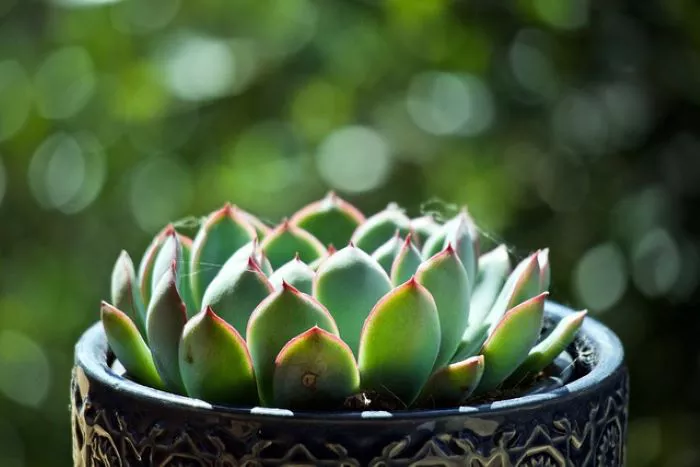Succulents are beloved for their unique forms, vibrant colors, and low maintenance needs. These hardy plants are ideal for both indoor and outdoor gardening. Understanding how and where to plant succulents is essential for their health and growth. This article will provide detailed guidance on the best practices for planting succulents, including site selection, soil requirements, and care after planting.
Understanding Succulents
Succulents are plants that store water in their leaves, stems, or roots. This adaptation allows them to thrive in arid environments. Common types of succulents include Echeveria, Aloe, Sedum, and various types of Cactus. Each variety has its own unique needs, but most share similar requirements for sunlight, soil, and watering.
Before planting, it is important to familiarize yourself with the specific needs of the succulent species you intend to grow. This knowledge will help you create the best environment for your plants.
Choosing the Right Location
Selecting the right location is crucial for the successful growth of succulents. Whether you are planting indoors or outdoors, consider the following factors.
For indoor planting, choose a bright location that receives plenty of indirect sunlight. South-facing windows are typically the best option. If natural light is limited, consider using grow lights to provide adequate illumination. Avoid placing succulents in dark corners or near drafty windows, as these conditions can hinder their growth.
For outdoor planting, select a spot that receives at least six hours of sunlight each day. Morning sunlight is preferable, as it is less intense and can help prevent sunburn. Avoid areas that are prone to excessive moisture or shade, as these conditions can lead to root rot and other issues.
Preparing the Soil
The right soil is essential for the health of succulents. Succulents require well-draining soil to prevent water from accumulating around the roots. Standard potting soil is not suitable, as it retains too much moisture. Instead, consider the following options for soil preparation.
Purchase a commercial cactus or succulent potting mix. These mixes are specifically formulated to provide excellent drainage and aeration. They often contain ingredients like perlite, pumice, and coarse sand.
If you prefer to make your own soil mix, combine equal parts potting soil, coarse sand, and perlite or pumice. This homemade mix will ensure that your succulents have the drainage they need to thrive.
Choosing the Right Container
If you are planting succulents in pots, the choice of container is important. Select pots that have drainage holes to allow excess water to escape. Terra cotta pots are a popular choice because they are porous and allow for good airflow.
When selecting a pot, consider the size of the succulent. Choose a container that is slightly larger than the root ball of the plant. This will provide enough space for growth without overwhelming the plant with too much soil.
For outdoor planting, consider using raised beds or garden plots with well-draining soil. If planting in the ground, ensure that the area has good drainage to prevent water from pooling around the roots.
Planting Succulents
Once you have chosen the location and prepared the soil, it is time to plant your succulents. Follow these steps for successful planting.
Start by digging a hole that is slightly larger than the root ball of the succulent. Gently remove the plant from its container, taking care not to damage the roots. If the roots are tightly bound, gently loosen them before planting.
Place the succulent in the hole and fill it with the prepared soil mix. Ensure that the base of the plant is level with the surrounding soil. Press the soil down gently to eliminate air pockets, but avoid compacting it too tightly.
After planting, water the succulent lightly to help settle the soil. Be cautious not to overwater, as succulents prefer to dry out between waterings.
Watering After Planting
Watering is a critical aspect of succulent care, especially after planting. After the initial watering, allow the soil to dry out completely before watering again. The frequency of watering will depend on several factors, including the type of succulent, the climate, and the season.
During the growing season, which typically occurs in spring and summer, you may need to water every one to three weeks. In fall and winter, when most succulents enter dormancy, reduce watering to once every few weeks.
Maintenance and Care
After planting succulents, ongoing care is essential for their health. Monitor the plants regularly for signs of stress or pest problems.
Provide adequate light by ensuring that your succulents receive the appropriate amount of sunlight each day. If you notice your plants stretching or leaning toward the light, they may need more exposure. Conversely, if the leaves appear scorched or discolored, they may be getting too much direct sunlight.
Fertilizing succulents is not always necessary, but it can promote healthy growth. Use a diluted, balanced fertilizer designed for cacti and succulents during the growing season. Fertilize every four to six weeks from spring to early fall. Avoid fertilizing during the dormant winter months.
Common Mistakes to Avoid
When planting succulents, it is important to avoid common mistakes that can hinder their growth. Overwatering is one of the most frequent issues. Always allow the soil to dry out completely between waterings.
Another mistake is insufficient light. Ensure that your succulents receive adequate sunlight to thrive. If you are growing succulents indoors, consider using grow lights if natural light is limited.
Finally, avoid planting succulents in heavy soils that retain moisture. Always use well-draining soil to promote healthy root growth.
Conclusion
Planting succulents can be a rewarding experience that adds beauty to your home or garden. By understanding how and where to plant succulents, you can create an environment that promotes healthy growth. Choose the right location, prepare the soil properly, and provide ongoing care to ensure your succulents thrive. With proper attention, your succulents will flourish and become stunning focal points in your plant collection. Embrace the joy of gardening with succulents and enjoy their beauty for years to come.


